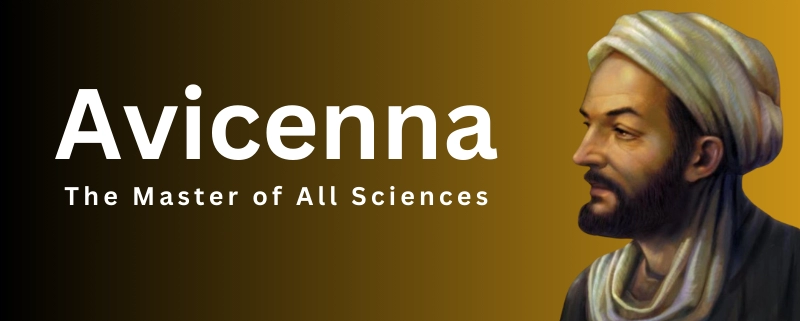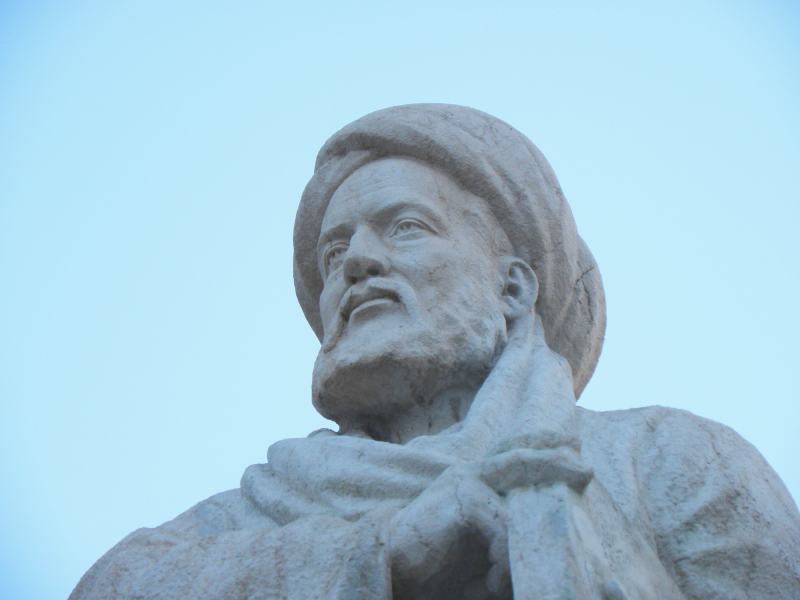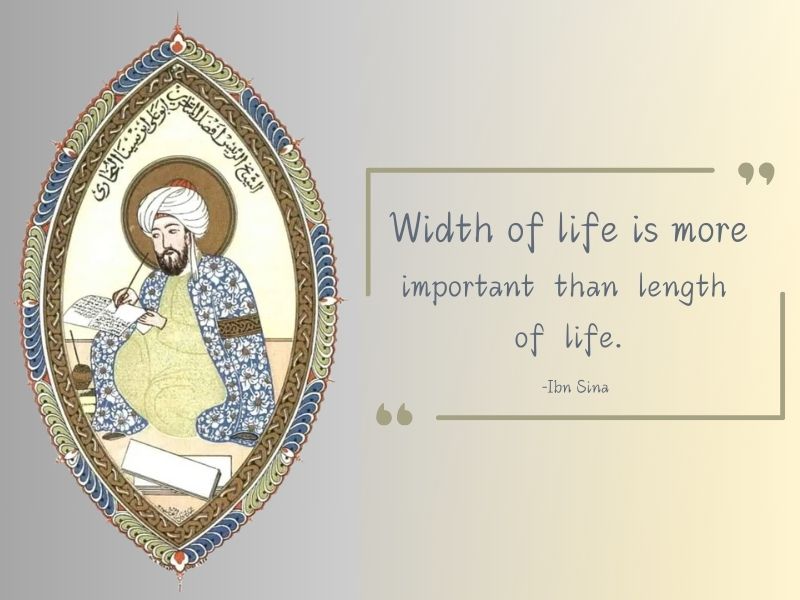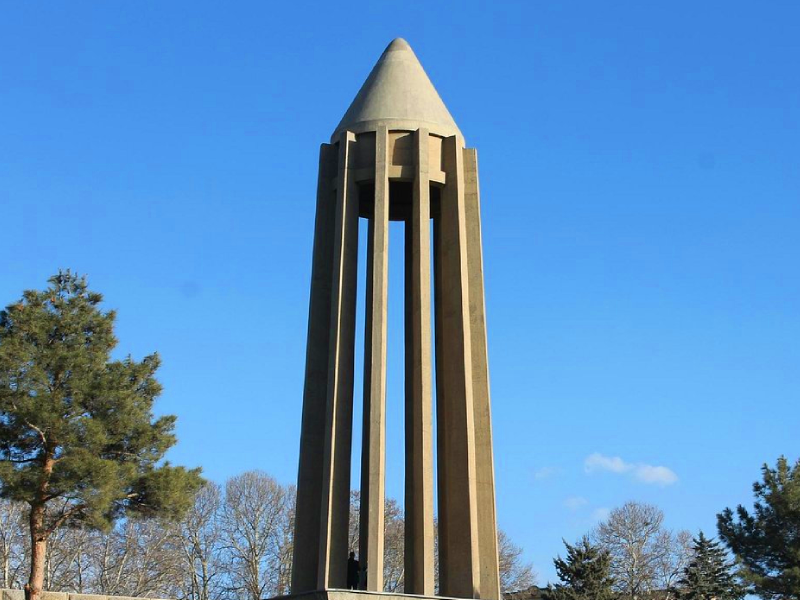Ibn Sina or Avicenna (Biography, Books, Religion)
Ibn Sina, nicknamed Sharaf al-Mulk, Hujjat al-Haqq, Pur Sina, and Shaykh al-Ra’is, is an Iranian physician, philosopher, and scholar and one of the most prominent thinkers of the Islamic world. He is considered the father of early modern medicine, and his birthday is named “Doctor’s Day.”
The period of research and activity of this scientist is known as the Golden Age of Islam, which made the name of Iran more famous in the world. Among the well-known works of Ibn Sina, we can mention “The Canon of Medicine.”
In the following, we will explore the biography, works, and efforts of this great philosopher.
Ibn Sina Biography
Abu Ali Sina, with the full name of Abu Ali Hussein ibn Abdullah ibn Hasan ibn Ali ibn Sina, a physician, scientist, philosopher, astronomer, writer, and great mathematician of the world, was born on the 1st of Shahrivar in the year 359 of the Persian solar calendar in a village called Kharmaythan near Bukhara, which was the center of the Samanid dynasty. He is famous in Latin as Avicenna. His father, Abdullah, was from Balkh, and his mother, Setareh, was from a village near Afshana.
Ibn Sina had a strange talent and intelligence in learning different sciences from the very beginning of his childhood. His father tried hard for his education since he was a child. He studied jurisprudence under Master Ismail Zahed. After that, his father sent him to learn logic and geometry under Abu Abdullah Natili.
He had memorized the Quran at the age of ten and knew Arabic literature, geometry, and mathematics, as well as grammar and syntax. Euclid’s Principles, Porphyry’s Introduction, and Ptolemy’s Al-Majaste are among the works that Ibn Sina studied as a child under the supervision of various teachers.
After studying Aristotle’s Metaphysics science 40 times, Ibn Sina could not understand its concept, and many doubts arose for him. With the help of Al-Farabi’s “The Aims of Aristotle’s Metaphysics,” he was able to understand it and realize its truth. He was able to learn the science of medicine by studying the writings of previous doctors, and in the shortest time, during his youth, he managed to cure the disease of the Amir of the Samanids.
As a reward, he was allowed to use the Samanid princes’ private, which further enhanced his knowledge. With his great study and intelligence, Ibn Sina was able to fully master many of the sciences of his time at the age of 18, and he owed his subsequent progress to his own personal arguments.
Ibn Sina Nationality
Ibn Sina was of Persian nationality and was born in the Bukhara region, now part of modern Uzbekistan. He lived in the Golden Age of Islam, the flourishing period of intellectual and cultural developments in the Islamic world. Although he spent most of his life in different parts of the Islamic world, including present-day Iran and Iraq, Avicenna’s Iranian heritage remained an important aspect of his identity.
Ibn Sina Religion
Ibn Sina was a Muslim who lived in the Golden Age of Islam. He was born in 980 AD in Iran. Ibn Sina’s religious beliefs were deeply rooted in Islam, and he made significant efforts to reconcile Islamic teachings with the rational research of philosophy.
While he adhered to the tenets of Islam, his philosophical works often explored complex questions about the nature of existence, the soul, and the relationship between God and the universe. Despite his profound contributions in various fields, Ibn Sina adhered to his Islamic faith throughout his life and emphasized the compatibility of reason and religion in his teachings.
Ibn Sina Books
Ibn Sina wrote about 450 works on a wide range of subjects, of which 240 have survived, including 150 texts related to philosophy and 40 texts on medicine. Most of his books were written in the official language of his time, Arabic. The most famous books of Ibn Sina are:
The Canon of Medicine (Al-Qanun fi al-Tibb)
This book, which is called “The Canon” in short, is the most important and complete work of Ibn Sina in the field of medicine. The original language of the book is Arabic, and it was translated into Farsi by Abdul Rahman Sharafkandi in the 1340s and 1360s. Until the 17th century, The Canon was taught as a medical reference book in Western universities.
The Book of Healing (Kitab al-Shifa)
This book is the most important work of Ibn Sina and a comprehensive encyclopedia in the field of science and philosophy. The language of the book is Arabic and is divided into four sections: logic, physics, mathematics, and metaphysics. The purpose of this book is to treat or heal the ignorance of the soul and does not focus on medicine.
The Book of Knowledge for Alai (Daaneshnameh-ye Ala’i)
Ibn Sina wrote this book in Persian and even sometimes tried to replace Arabic words with Persian ones. The book is a comprehensive treatise on seven sciences, which is collected in four sections: logic, metaphysics, natural sciences, and mathematics. The main part of mathematics was lost during Ibn Sina’s lifetime.
Ibn Sina Contribution
Ibn Sina’s philosophical system is a combination of the main rules of Aristotelian-Mashai philosophy and the principles of the Neoplatonism worldview. He was very indebted to Farabi in his philosophical thinking, especially the topics related to metaphysics. Following Farabi, he began to think about the issue of existence and made a distinction between essence and existence.
Ibn Sina presented a proof known as the “proof of the Truthful” for the existence of God.
He believed in a necessary existence – that which cannot, not exist – and equated it with the Islamic concept of God. Today, this argument is considered one of the most influential medieval arguments in proving the existence of God and the most important contribution of Ibn Sina in the history of philosophy.
Ibn Sina was a devout Muslim who sought to reconcile rational philosophy with Islamic theology and intended to prove the existence of God and the creation of the world in a scientific, rational, and logical way. Until the 19th century, his perspectives on Islamic theology and philosophy wielded considerable influence, shaping the fundamental fabric of religious-Islamic school curricula.
What is Ibn Sina famous for?
Many people wonder what Ibn Sina was famous for or why he is still remembered after so many years. Ibn Sina is known for his significant contributions in various fields, such as medicine, philosophy, and science. He is often regarded as one of the most influential thinkers of the Islamic Golden Age. Avicenna’s most famous work is the Canon of Medicine, a comprehensive encyclopedia of medicine that remained a standard medical text in Europe and the Islamic world for centuries.
In addition, he made significant advances in philosophy, especially metaphysics, and provided influential arguments for the existence of God. Avicenna’s works bridged the gap between the Greek and Islamic philosophical traditions, and his ideas deeply influenced the development of Eastern and Western thought.
Ibn Sina & Art
He also has works in music that are worthy of attention primarily in terms of methodology because they can be a guide for scientific music research. He has mystical works in the language of mystery and irony and in the form of allegory, which had a clear impact on the Sufi literature of later periods and on the way of expressing mystical content.
He has also written about language and linguistics. He was skilled in poetry and rhetoric, which speaks of his power and mastery of the Arabic language. He also has a very important small treatise on the principles and principles of phonetics.
Ibn Sina’s works in the Persian language have been left behind, which are valuable and important in terms of the history of the evolution of this language and the recognition of its abilities and capabilities. His most famous writing in Farsi is the Encyclopedia of Ala’i.
Ibn Sina Cause of Death
During the time he lived in Isfahan, Abu Ali Sina garnered the attention of Ala al-Dawla and lived a peaceful life until Isfahan was attacked by Mas’ud Ghaznavi. In this attack, some important works of this great scientist were destroyed. This incident gave him a big blow. Following this event, Ibn Sina, who was suffering from colic, decided to go to Hamadan and live there for the rest of his life. He died on the 2nd of Tir in the year 416 of the Persian solar calendar, at the age of 57, and was buried in Hamedan.
In some sources, it has been said that colic disease was the cause of Abu Ali Sina’s death, but the cause of his death has not been mentioned definitively. His tomb is located in Bu-Ali Sina square in the center of Hamadan city. This site was registered as a national heritage of Iran in 1376 (Solar Hijri).
Final Word
Ibn Sina appears as a great figure in the fields of medicine, philosophy, and science during the Golden Age of Islam. His contributions, including the Canon of Medicine and influential philosophical works, have left an indelible mark on human knowledge and shaped the course of intellectual history. To truly appreciate the legacy of this remarkable thinker, one should visit his tomb in Hamadan, Iran. Avicenna’s tomb, located in the heart of the city, is a symbol of his lasting influence and serves as a place of pilgrimage for those who seek to pay homage to his genius and wisdom.
Are you planning to travel to Iran and looking for an Iran travel agency? Check out our Iran tours and feel free to contact us.









Leave a Reply
Want to join the discussion?Feel free to contribute!